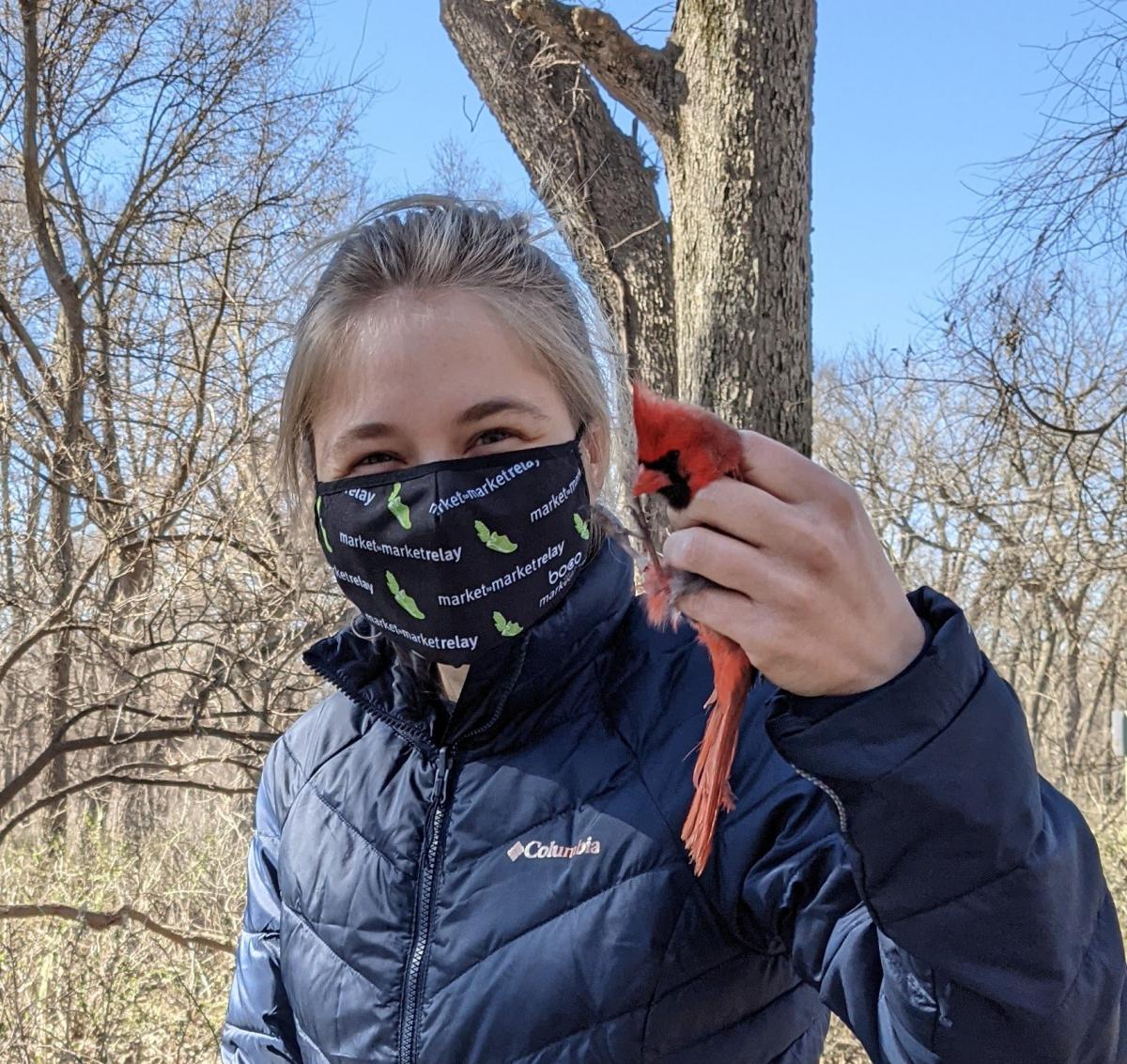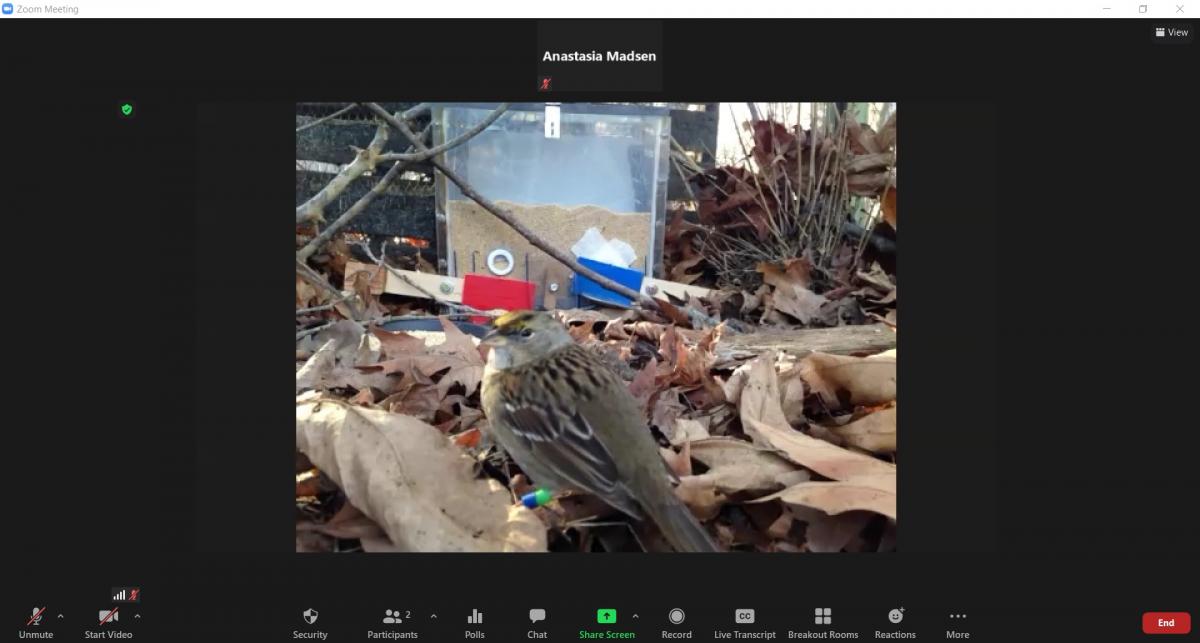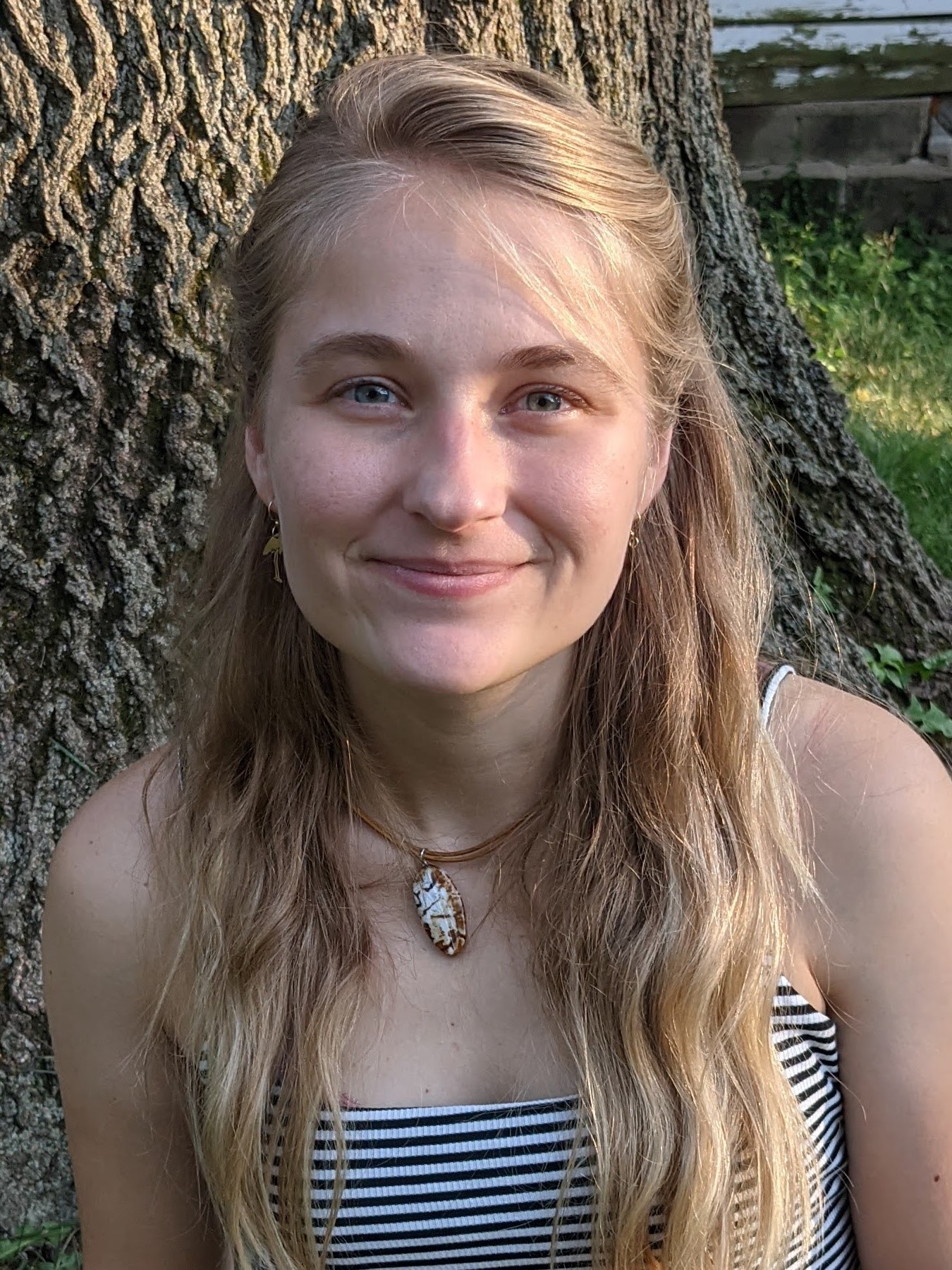Exploring social resilience with sparrows and elephants
NRT doctoral student Annie Madsen found creative ways to research golden-crowned sparrows in California and elephants in Sri Lanka while keeping to the prairies during the pandemic.
She Zoomed with the migratory birds and remained riveted to an unfolding drama of Asian elephant relationships, captured in photographs and recorded observations.
Then, too, she couldn’t resist helping with a local project. She joined her advisor, Professor Daizaburo Shizuka, and other biological scientists in reinvigorating Reller Prairie Natural History Area, a university research site fallen into disuse near Sprague. The Shizuka lab is now using it to investigate the social behaviors of mixed-flock birds in winter.

“How can I say no to an amazing research opportunity?” she asks with a laugh, explaining involvement in this additional project. “The questions are so interesting!”
In her golden-crowned sparrow research, she is seeking answers to questions such as, Are the sparrows capable of social learning? Can they adapt to new food sources? How do their social networks change after a habitat loss?
The sparrows she studies are part of a project begun in 2003 at the University of California-Santa Cruz. They winter at an arboretum there from about October to March and then migrate to Alaska for the warmer months. They return every year to within about 30 meters of their arboretum habitat, Madsen says.
She designed a puzzle box bird feeder to test whether six sparrows could learn how to get millet from the box and then whether other sparrows could learn from them.
“The birds have to land on a platform that pulls down a door, giving them access to seed through a hole,” she says. “They have to actually land on the platform to get access to the seed, so that’s the part that’s the puzzle.”
Madsen had a field technician in California manage the project and record video for her. They held the six sparrows captive in an aviary for up to 96 hours to train them on the puzzle box. As ground foragers, the birds were initially drawn to the puzzle box by seeds scattered on one of two platforms. They could land on either a red or a blue platform and receive more seeds.
Madsen Zoomed with the captive birds, ensuring they ate properly during training. Four of the six birds learned the task and became “demonstrators.” The other two were released, untrained (and with no new job titles).

“Once we were finished training these demonstrators, we released them back into the arboretum, and then we placed two puzzle boxes out and tracked everyone’s behavior using trail cameras,” she says.
Of the approximately 80 birds in the arboretum, about half learned to use the puzzle boxes at speeds consistent with social learning.
In the next planned step of the experiment, Madsen is testing the returning birds’ memory of the puzzle boxes solved last year and is developing a second puzzle box to test how learning on the first box may affect learning on the second.
In an unplanned step of the experiment, a parking lot was installed in the arboretum and inspired new research questions.
“Obviously, the humans planned on this happening, but the birds had no idea, and so I am going to be looking at how their networks changed after this big habitat loss,” Madsen says.
This unexpected test on the sparrows may indicate how well they adapt to environmental change.
“That’s important for any animal that’s living near human structures right now because of the large instances of human change, urbanization, agricultural expansion, and all of those things, they change the distribution of resources on a landscape,” she says. “If we can kind of gauge how the sparrows are going to respond to new food sources, we can see, are they going to be a population that can adapt to new sources of food, or are they not going to respond to it?”
Similarly, with the Asian elephants, Madsen has been looking at how their social networks are affected by environmental changes and by demographic changes from births, natural deaths and poaching.
Her main case study is Jasmine, an elephant whose mother died naturally at about 62 years. Since her mother’s death, Jasmine left the elephant herd in Udawalawe National Park and moved into a corridor between two parks.
Madsen was engrossed in this unfolding pachyderm drama when humans entered the corridor. She says they cleared some land for agriculture, which could lead to human-wildlife conflict.
“There may be crop damage from elephants moving through such areas because they’re so large and may trample crops,” she says. “They also raid cropland because they don’t know the crops are not meant for them.”
With this possibility for conflict, Madsen says Jasmine’s case study has become even more important because it documents elephant use of land and could help inform a decision on future use of the corridor.
She is set now on her own future, planning to pursue a career in academia. She credits the NRT for increasing her learning as a professional the most, helping her looking at complex issues and questions with greater understanding.
“I am very excited by my research and everything I have learned from the sparrows and from the elephants, but the NRT program and the curriculum here has impacted me much more than I thought it would and in ways that I didn’t think it would,” she says. “I think about questions in just a completely different way now when I’m trying to consider not just the small-scale interactions of an individual on a landscape but the larger-scale interactions.”
— Ronica Stromberg, National Research Traineeship Program Coordinator



